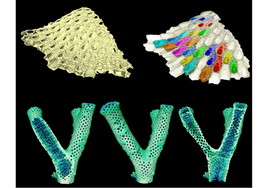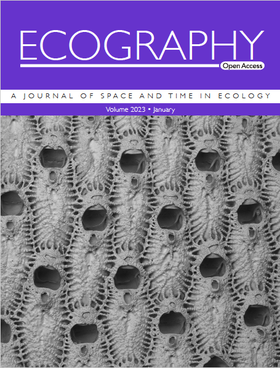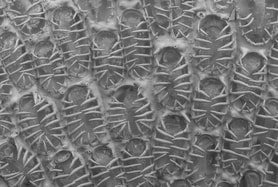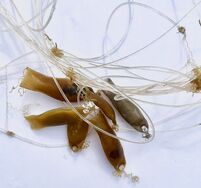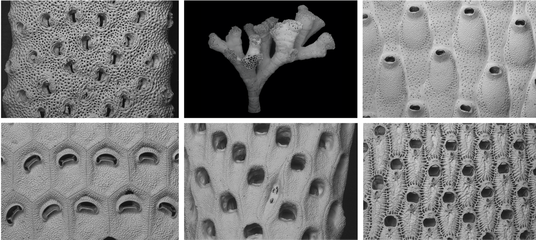I am currently a Ramon y Cajal researcher at the Institute of Marine Sciences (ICM-CSIC) of Barcelona. My work aims to better understand how marine organisms respond to past, present and future environmental changes. My research is thus multidisciplinary and lies at the interface between biodiversity, ecology and paleoecology.
Research lines
Using ecological and paleoecological data to inform future marine conservation
Increased levels of atmospheric carbon dioxide as a result of human activities are driving rising temperatures, ocean acidification and consequent impacts on marine ecosystems. Understanding how marine organisms can cope with these environmental changes is essential for predicting the future of marine ecosystems. Marine calcifiers, organisms which build their skeletons from CaCO3, may be particularly sensitive to these threats. One of my current research aims to: 1) assess the effects of global changes on marine calcifiers and their associated microbiome and 2) use their fossil record to reconstruct natural and human-driven changes in coastal ecosystems. The final goal is to be able to better predict the future global change impacts on marine ecosystems and generate scientific research that can inform policy decisions.
My work uses a variety of lab and field approaches integrating: (a) data from marine organisms (e.g. biological traits), (b) their associated microbiome, which have a strong influence on host physiology and ecological function and (c) geochemical and biological proxies (e.g. stable isotopes and fossil assemblages).
One of my main study groups are bryozoans, which are still an overlooked group of aquatic invertebrates, despite being great model systems for understanding ecological and evolutionary processes. This is because they are: (a) diverse (>6000 species) & abundant worldwide, being present from the intertidal to the deep sea, (b) common foulers in the ocean, (c) producers of defensive skeletal structures and chemicals (potential drugs with pharmacological applications) against predation, diseases, and fouling and (d) natural archives of past environmental change as they are carbonate producers and thus well represented in the fossil record.
My work uses a variety of lab and field approaches integrating: (a) data from marine organisms (e.g. biological traits), (b) their associated microbiome, which have a strong influence on host physiology and ecological function and (c) geochemical and biological proxies (e.g. stable isotopes and fossil assemblages).
One of my main study groups are bryozoans, which are still an overlooked group of aquatic invertebrates, despite being great model systems for understanding ecological and evolutionary processes. This is because they are: (a) diverse (>6000 species) & abundant worldwide, being present from the intertidal to the deep sea, (b) common foulers in the ocean, (c) producers of defensive skeletal structures and chemicals (potential drugs with pharmacological applications) against predation, diseases, and fouling and (d) natural archives of past environmental change as they are carbonate producers and thus well represented in the fossil record.
"Anyone who starts to look at bryozoans will continue to do so, for their biology is full of interest and unsolved mysteries".
J. Ryland.
J. Ryland.
Relevant publications
|
Plastics as dispersal vectors of marine species
Plastic debris provides long-lasting substrates for a variety of species and can thus eventually alter marine ecosystems. Identifying these fouling organisms can provide valuable insights into the movement processes of plastics in the oceans, yet only a few studies have identified these organisms to the species level, and even less have characterized the plastics they were attached to. To address this gap in research, I started a new research line on this topic in collaboration with Dr Anna Sánchez from the University of Barcelona.
Relevant publications
- Kannan G, Mghili B, Di Martino E, Sanchez-Vidal A, Figuerola B*. 2023. Increasing Risk of Invasions by Organisms on Marine Debris in the Southeast Coast of India. Marine Pollution Bulletin 115469
- Subías-Baratau A, Sanchez-Vidal A, Di Martino E, Figuerola B*. 2022. Marine biofouling organisms on beached, buoyant and benthic plastic debris in the Catalan Sea. Marine Pollution Bulletin 175: 113405
Taxonomy is essential for biodiversity conservation and management
The lack of expert-curated taxonomic and trait databases for most organisms, partly due to the “taxonomic impediment”, makes conservation and management of biodiversity challenging as this information is essential for predicting biodiversity responses to environment, which can serve to inform marine conservation policies. I provide my expertise as a bryozoologist in biodiversity studies and collaborative initiatives on building global and local expert-curated trait and molecular database.
Relevant publications
- Campanyà-Llovet N, Bates A, Cuvelier D, Giacomello E, Catarino D, Gooday AJ, Berning B, Figuerola B, [21 other authors], Colaço A.. 2023. FUN Azores: A FUNctional trait database for the meio-, macro-, and megafauna from the Azores Marine Park (Mid-Atlantic Ridge). Frontiers in Ecology and Evolution 11:1050268.
- Jossart Q, Bauman D, Moreau C.VE , Saucède T, Christiansen H, Brasier MJ, Convey P, Downey R, Figuerola B, Martin P, Norenburg J, Rosenfeld S, Verheye M, Danis B. 2023. A pioneer morphological and genetic study of the intertidal fauna of the Gerlache Strait (Antarctic Peninsula). Environmental Monitoring and Assessment 195: 514.
- Orr RJS, Di Martino E, Ramsfjell M, Gordon DP, Berning B, Chowdhury I, Craig A, Cumming RL, Figuerola B, [24 other authors], Liow LH. 2022. Paleozoic origins of cheilostome bryozoans and parental care inferred by a new genome-skimmed phylogeny. Science Advances 8, eabm7452.
- Figuerola B*, Gordon DP, Cristobo J. 2018. New deep Cheilostomata (Bryozoa) species from the Southwestern Atlantic: shedding light in the dark. Zootaxa 4375 (2): 211-249.
- Figuerola B*, Barnes DKA, Brickle P, Brewin PD. 2017. Bryozoan diversity around the Falkland and South Georgia Islands: Overcoming Antarctic barriers. Marine Environmental Research 126:81-94.
